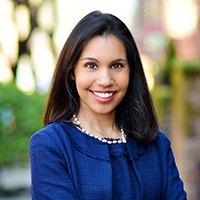
Contact with Represented Persons by a Pro Se Lawyer

On September 28, 2022, the American Bar Association (ABA) Standing Committee on Ethics and Professional Responsibility issued Formal Opinion 502, which addresses a pro se lawyer’s obligations under ABA Model Rule 4.2 (Communication with Person Represented by Counsel). This rule — often referred to as the skip counsel, no-contact, or anti-contact rule — prohibits a lawyer from communicating “about the subject of the representation with a person the lawyer knows to be represented by another lawyer in the matter, unless the lawyer has the consent of the other lawyer or is authorized to do so by law or court order.”[1]
Formal Opinion 502 notes that the “general prohibition of Model Rule 4.2 is ubiquitous in US jurisdictions.”[2] Indeed, California’s Rule 4.2 provides that “[i]n representing a client, a lawyer shall not communicate directly or indirectly about the subject of the representation with a person the lawyer knows to be represented by another lawyer in the matter, unless the lawyer has the consent of the other lawyer.”[3]
While the ABA Model Rules are not binding in California, they are persuasive authority when interpreting the California Rules of Professional Conduct. Moreover, the ABA’s ethics opinions may be instructive for attorneys engaged in multi-jurisdictional practices. Thus, California attorneys should be familiar with the guidance included in ABA Formal Opinion 502.
ABA Formal Opinion 502
Formal Opinion 502 addresses the specific situation involving a lawyer who is engaged “in self-representation in a legal matter in which that lawyer is personally involved,” i.e., when the lawyer is acting pro se. Because pro se lawyers are both the lawyer and the client in a matter, the application of ABA Model Rule 4.2 can be murky.
On the one hand, the text of the rule prohibits a lawyer from communicating with a represented party in the matter. On the other hand, Comment 4 to the rule states that “[p]arties to a matter may communicate directly with each other.” Formal Opinion 502 seeks to clarify whether, in the context of Model Rule 4.2, a pro se lawyer should be treated as the lawyer or as the party in the matter.
The opinion begins by outlining the policy goals underlying Model Rule 4.2. Specifically, the rule is aimed at preventing lawyers from (1) overreaching and engaging in deceptive conduct; (2) interfering with the integrity of the client-lawyer relationship; and (3) eliciting protected information through “uncounselled disclosures” (such as privileged communications). [4]
The opinion then notes that “decades worth of disciplinary cases, civil cases, and ethics opinions … reason that a pro se lawyer is ‘representing a client’ for purposes of Model Rule 4.2,” and that direct communication between a pro se lawyer and another represented person can undermine the policy aims of Model Rule 4.2. Thus, “it is not possible for a pro se lawyer to ‘take off the lawyer hat’ and navigate around Rule 4.2 by communicating solely as a client.”
The opinion concludes that Comment 4, which permits parties to communicate with each other directly, does not apply to pro se lawyers. Accordingly, a pro se lawyer is prohibited from communicating directly with another represented person in the matter about the subject of the representation, unless they have the consent of that person’s counsel or authorization by a court or law. This conclusion underscores the concept that “the rules of professional conduct establish limits on lawyer behavior, not that of their clients.”[5]
As a best practice, the ABA ethics opinion suggests that if a pro se lawyer wishes to engage in direct communications with a represented person in the matter, concerning the subject of the representation, then the pro se lawyer should seek a written agreement with the represented person’s lawyer. The agreement should address the scope of and conditions under which such communications can take place in order to prevent “disputes about compliance and ensure no disruption of Model Rule 4.2’s protections.”[6]
Notably, ABA Formal Opinion 502 contains a dissent. The dissent argues that a lawyer is unlikely to think that the restrictions on direct communications contained in Model Rule 4.2 apply to pro se lawyers, especially because Comment 4 permits parties in a matter to communicate directly with each other. To remedy the discordance between the plain language of the rule and its interpretation by legal authorities and commentators, the dissent proposes that the rule be amended “to achieve the result advocated for in the majority opinion.”[7]
California: Pro Se Lawyers and Rule 4.2
California’s version of Rule 4.2 clarifies its application to pro se lawyers more than the ABA’s version. In this regard, Comment 3 to the California rule specifies that “[t]he rule…does not prohibit a lawyer who is a party to a legal matter from communicating on his or her own behalf with a represented person in that matter.”
While California attorneys can be grateful for this straightforward handling of Rule 4.2 vis-à-vis pro se lawyers, it is nonetheless important to be aware of ABA Formal Opinion 502, especially for matters involving multiple jurisdictions, and in case the ABA’s conclusions become universally accepted.
[1] ABA Rules of Prof’l Cond., Rule 4.2.
[2] ABA Formal Op. 502, p. 3.
[3] Cal. Rules of Prof’l Cond., Rule 4.2.
[4] ABA Rules of Prof’l Cond., Rule 4.2., Cmt. 1.
[5] ABA Formal Op. 502, p. 5.
[6] Id., p. 6.
[7] Id., p. 8.